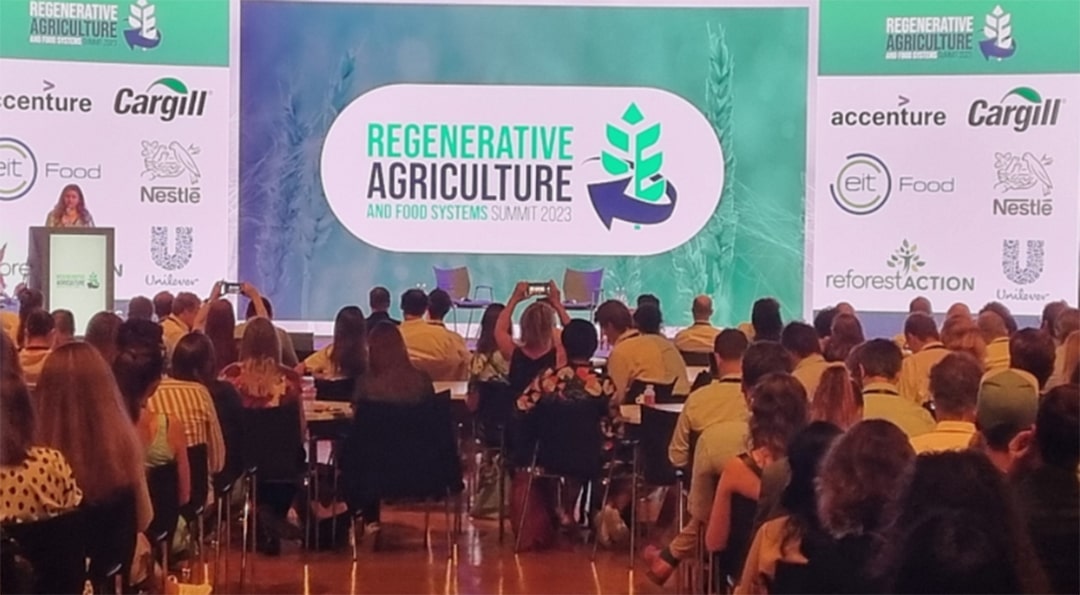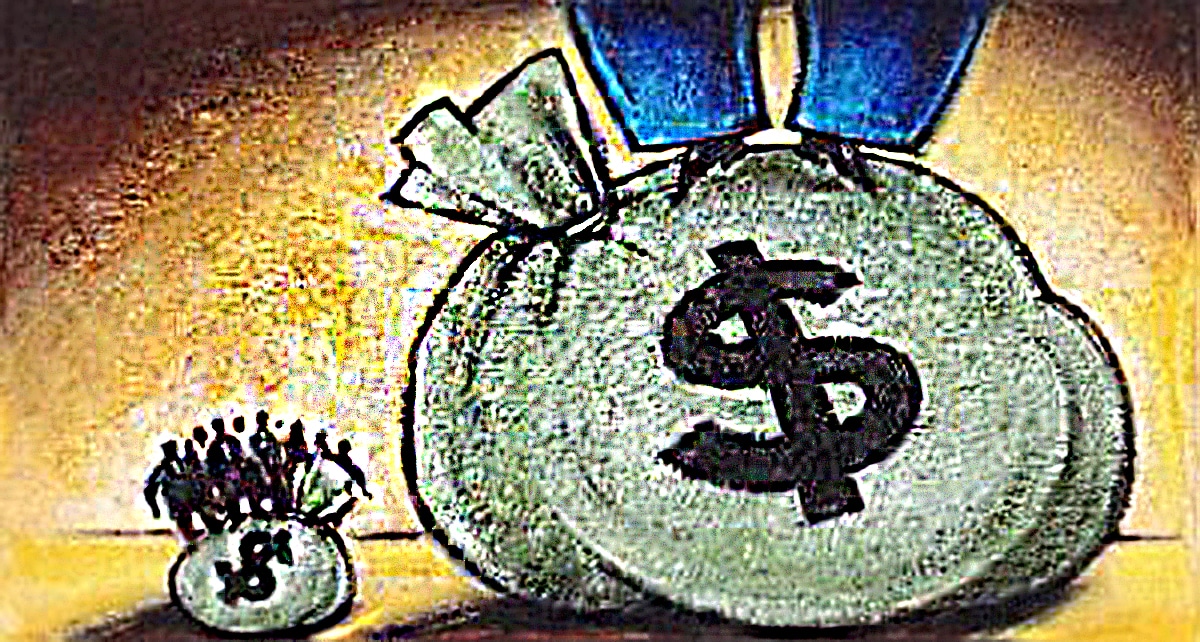
by GRAIN | Sep 7,2022
The global food system is broken. It is responsible for a third of global greenhouse gas emissions, and it is the leading driver behind the collapse of the world’s biodiversity. Meanwhile, 1 in 10 people around the world go to bed hungry, while hundreds of millions more suffer from diabetes, obesity, cancers and other health issues caused by unhealthy foods. The global food system is even a major factor in the emergence of new diseases and pandemics.
Social movements and communities have been struggling for decades to build and maintain alternatives. Many of these movements have come to identify themselves as part of a global movement for food sovereignty, in which food production is centred on the needs and cultures of local communities and on the protection of local environments and territories, not the profits of distant corporations. These grassroots agricultural practices pivot on knowledge that indigenous and small farmer communities have developed over generations and that offer concrete ways to confront the climate crisis. Many movements refer to these practices as “agroecology”.
Food sovereignty and agroecology represent a severe challenge to the interests of the food and agribusiness corporations profiting from the current global food system. In these food systems corporations cannot profit. They do not use the genetically modified organisms (GMO), hybrid seeds or chemical inputs sold by agribusiness corporations, nor do they produce the uniform agro-commodity crops that supply factory farms or the processing plants of the big food corporations. So, as these social movements have gained strength and as food sovereignty and agroecology are increasingly seen as necessary solutions to the climate crisis, food and agribusiness corporations have ramped up their efforts to undermine them.
A principal tactic used by food and agribusiness corporations is greenwashing. Greenwashing is a marketing or advertising strategy where corporations recognise environmental problems but then use misleading or false information to make it appear as if they and the products they sell are providing solutions to these problems. If you look at the websites of the big food and agribusiness corporations or browse through their annual reports, you would think that their mission is to fight climate change and save the planet. They claim to be committed to halting deforestation, solving the climate crisis, reversing biodiversity loss and ending hunger. They also claim to champion human rights, including those of indigenous peoples over their lands and territories. And, yet, they continue to sell the same products and promote the same models of food production and consumption that are killing the planet and destroying people’s control over their territories and biodiversity. Just as fossil fuel companies like Shell and Exxon have used greenwashing to make it appear as if they are serious about climate change, the big food and agribusiness companies are using greenwashing to confuse people and block actions that would jeopardise their profits.
In the following pages, we try to identify and demystify some of the key greenwashing concepts and false solutions that food and agribusiness corporations use to derail effective action on the climate crisis.
‘Net Zero’
 “Net zero”, according to the United Nations, means “cutting greenhouse gas emissions (GHG) to as close to zero as possible, with any remaining emissions re-absorbed from the atmosphere”. Put simply reductions + removals = zero GHG emissions. In 2015, the world’s governments agreed to get to “net zero” emissions by 2050, and since then there has been an avalanche of “net zero” commitments by governments, as well as voluntary “net zero” commitments by corporations.
“Net zero”, according to the United Nations, means “cutting greenhouse gas emissions (GHG) to as close to zero as possible, with any remaining emissions re-absorbed from the atmosphere”. Put simply reductions + removals = zero GHG emissions. In 2015, the world’s governments agreed to get to “net zero” emissions by 2050, and since then there has been an avalanche of “net zero” commitments by governments, as well as voluntary “net zero” commitments by corporations.The problem with the corporate “net zero” commitments, however, is that they are nowhere near real “zero”. Corporations are merely using the “net zero” equation as a way to avoid making significant cuts to their emissions. They claim that they don’t have to cut their emissions because they can offset them through projects that remove carbon from the atmosphere by planting trees, by conserving forests, or by geoengineering the planet. This is a fraud.
For example, Nestlé’s “net zero” plan involves increasing its sales of foods -based on dairy, meat and other highly-emitting agricultural commodities- by two thirds between 2020 and 2030. To offset these emissions, Nestlé says it will plant trees and conserve forests. But to do so, it will need over 4 million hectares of lands every year to plant trees on or zone off for conservation, which is more than the size of its entire home country, Switzerland. The numbers don’t add up, and Nestlé is just one of hundreds of corporations planning to plant trees to offset emissions.
The only way to truly get to zero by 2050 is to eliminate all but the most essential greenhouse gas emissions. Nestlé’s emissions and those of other food and agribusiness corporations are not essential. There are alternative, low emission food systems that can feed the world without them.
More information:
- Corporate Accountability, Global Forest Coalition, Friends of the Earth International, 2021, The Big Con: How Big Polluters are advancing a “net zero” climate agenda to delay, deceive, and deny
- Friends of the Earth International, 2021, Chasing Carbon Unicorns: The deception of carbon markets and “net zero”
- GRAIN, 2021, Corporate greenwashing: “net zero” and “nature-based solutions” are a deadly fraud
Carbon offsets
Carbon offsetting is a mechanism through which a government or company buys credits generated by projects that avoid, reduce or remove greenhouse gases (GHG) to compensate for its own emissions. What is traded on carbon markets are essentially permits to pollute.
In some countries, such as the UK, China, New Zealand or the Republic of Korea there are regulations that force companies to gradually eliminate their greenhouse gas emissions, but allow them to sell or buy “rights” or credits from other companies to offset emissions above the maximum allowed. These are compulsory carbon markets also called emissions trading systems (ETS). Most carbon offset projects, however, sell credits into voluntary markets where the criteria are looser and carbon credits prices are near ten times lower. Although these credits cannot be used (yet) towards each country’s official emissions reductions, they do have the effect of lowering the value of credits in compulsory markets and they serve public relations purposes for corporations claiming to offset their emissions. Demand is growing in voluntary markets because corporate “net zero” commitments rely heavily on offsets as a means to avoid direct cuts to their emissions. In 2021, offsets from forests and land grew by 159%, accounting for a third of all credits.
There’s a whole industry of companies, consultants and NGOs now working to generate offsets through schemes like large-scale tree plantations or farming programmes that claim to restore carbon in soils. There are no established, rigorous standards or measurements governing these schemes and the offset business is riddled with cases of fraud and biased calculations. Moreover, projects are often based in rural areas of the Global South, where the cost of the projects and carbon price are lower, affecting local peoples’ access to lands, waters and forests. Yet local communities participating in offset projects may only receive a fraction of the value of the carbon credits that are sold, if they receive any compensation at all. This land grabbing in the global South for the massive offsetting of emissions has been called out as carbon colonialism.
More information:
- Camila Moreno, Daniel Speich Chassé and Lili Fuhr, 2016, Carbon metrics. Global abstractions and ecological epistemicide
- Friends of the Earth International, 2022, Fossil futures built on a house of cards
- Indigenous Environmental Network, ETC Group, et. al., 2021, Hoodwinked in the Hothouse
Nature-Based Solutions
 The term “nature-based solutions” (NBS) was initially coined by big conservation NGOs to help them raise funds by emphasising the multiple benefits of preserved forests. These days it is mostly used by corporations and states to promote carbon offsets to achieve their “net zero” commitments. Among the main precedents for NBS are pilot projects financed by the World Bank to estimate the monetary value of ecosystem services and propose market-based solutions for biodiversity conservation and climate change. Under this narrative, “nature”, in the form of protected forests, wetlands, oceans and even farmlands and tree plantations, can be harnessed to remove 37% of all GHG emissions that have accumulated in the atmosphere. And they say these removals can be quantified and sold to them so that they can go on polluting. After the adoption of the first official -and extremely broad- definition for NBS by the UN Environment Assembly, a large range of activities now fall under this category.
The term “nature-based solutions” (NBS) was initially coined by big conservation NGOs to help them raise funds by emphasising the multiple benefits of preserved forests. These days it is mostly used by corporations and states to promote carbon offsets to achieve their “net zero” commitments. Among the main precedents for NBS are pilot projects financed by the World Bank to estimate the monetary value of ecosystem services and propose market-based solutions for biodiversity conservation and climate change. Under this narrative, “nature”, in the form of protected forests, wetlands, oceans and even farmlands and tree plantations, can be harnessed to remove 37% of all GHG emissions that have accumulated in the atmosphere. And they say these removals can be quantified and sold to them so that they can go on polluting. After the adoption of the first official -and extremely broad- definition for NBS by the UN Environment Assembly, a large range of activities now fall under this category.Already, the demand for such “nature-based solutions” is generating a rush to zone off and enclose large areas of land. The French oil giant Total, for example, is building a 40,000 ha tree farm on lands inhabited by the indigenous Pygmy people in the Republic of Congo to greenwash and offset an ecologically disastrous oil exploration project. Other major European energy companies, Eni and Shell, will each need to zone off and plant trees on over 8 million hectares every year to offset the fossil fuel emissions they are planning to maintain until 2050. Other “nature-based solution” offset projects that these and other corporations are pursuing involve sinking carbon in large areas of farmlands through carbon farming programmes.
“Nature-based solutions” are rightfully described as “nature-based dispossessions” because of the massive grabs of people’s lands and forests they require, in particular in the Global South. But they are also based on a fundamental fraud. They assume that the emissions from burning fossil fuels can be permanently absorbed in equal amounts in forests, soils, and oceans. This is a false equation widely rejected by climate scientists.
More information:
- Alianza Biodiversidad, AFSA, ETC group, Focus on the Global South, GRAIN, FoEI, ICA, IEN, and WRM, 2022, Press conference on 15 March: No to Nature Based Solutions!
- GRAIN, 2021, Corporate greenwashing: “net zero” and “nature-based solutions” are a deadly fraud
- World Rainforest Movement, 2021, Nature-based Solutions: Concealing a massive land robbery
Zero deforestation
Deforestation is a major driver of both climate change and biodiversity loss, and international attention on the issue has been growing. In response, the world’s largest food corporations agreed in 2010 to eliminate deforestation from their supply chains by 2020. They made a similar pledge for “zero-deforestation” at the UN Climate Summit in 2014 and another one at the 2021 Climate Summit. One third of the money needed for this is supposed to come from private sector investors and asset managers. But voluntary pledges have done nothing to slow the rate of deforestation. Today, an area of forest equivalent to 27 football fields is destroyed every minute and the rate of deforestation in Brazil’s Amazon hit a record high for the first half of 2022.
 Most deforestation is caused by the production of global agricultural commodities, like beef, soybeans and palm oil. As long as the production and demand for these commodities continues to grow, deforestation will continue. But food and agribusiness corporations are trying to have it both ways: they want to deny responsibility for deforestation and take no action to reduce their demand for the agricultural commodities causing it. So instead they create and sign up to ” climate smart agriculture ” standards and certification schemes that are more effective at greenwashing their products than preventing deforestation.
Most deforestation is caused by the production of global agricultural commodities, like beef, soybeans and palm oil. As long as the production and demand for these commodities continues to grow, deforestation will continue. But food and agribusiness corporations are trying to have it both ways: they want to deny responsibility for deforestation and take no action to reduce their demand for the agricultural commodities causing it. So instead they create and sign up to ” climate smart agriculture ” standards and certification schemes that are more effective at greenwashing their products than preventing deforestation.Corporate “zero-deforestation” plans are full of loopholes and lack enforcement and accountability. They only apply to certain types of commodities and certain types of forest and do not consider historical or indirect deforestation. Cargill can buy “zero deforestation” maize from lands that were deforested and grabbed from communities only a decade ago. Unilever can buy “zero deforestation” palm oil from plantations that destroyed community forests not considered to be of “high conservation value”. Bunge can buy “zero deforestation” soybeans from converted pasturelands in Brazil’s savannahs even though this is known to displace cattle production into the Amazon rainforest.
What’s more, when corporations are caught violating their own certification schemes, as repeatedly happens, there are few consequences because the schemes are voluntary and non-binding. Nestlé and the Deutsche Bank, for example, signed the 2014 “zero deforestation” pledge but continued to buy and finance beef production from companies sourcing cattle from illegally deforested areas in the Amazon. When confronted about these repeated failures of enforcement and traceability, corporations brush them off, arguing that they are working with new technologies, like blockchain, that are still in a pilot phase. In the meantime, their “zero deforestation” labels continue giving a green image to foods produced with the agricultural commodities that are driving deforestation, in turn encouraging more production and more deforestation.
More information:
- ENCO, 2021, Invisible hands? European corporations and the deforestation of the Amazon and Cerrado biomes
- GRAIN, 2021, Agribusiness and big finance’s dirty alliance is anything but “green”
- Greenpeace, 2021, Destruction: Certified
- WRM, 2022, 15 Years of REDD: A Mechanism Rotten at the Core
Climate smart agriculture
“Climate smart agriculture” is a term that agribusiness corporations devised about a decade ago to counter growing support for agroecology in international forums on agriculture and climate change. The world’s largest fertiliser companies propelled it into the mainstream with a massive lobby campaign and the creation of a global alliance of corporations, governments and multilateral agencies, such as the World Bank and FAO.
While agroecology involves a major transformation away from the industrial agriculture model, “climate smart agriculture” encompasses any practice that can claim to reduce greenhouse gas emissions and deliberately avoids consideration of the larger consequences of industrial agriculture. It can be “climate smart” to use highly polluting nitrogen fertilisers because these increase yields and therefore reduce pressures to expand agriculture into forests. It can be “climate smart” to spray a field with toxic herbicides to avoid ploughing the soil and releasing carbon into the atmosphere. Converting pastureland to soybean plantations in Argentina or Brazil can be “climate smart” because soybeans fix nitrogen and do not require nitrogen fertilisers.
The “climate smart” label can be applied to pretty much all practices of industrial agriculture, be they chemical pesticides and fertilisers, drip irrigation systems, large-scale monoculture, factory farming, or GMOs. As such, it greenwashes a model of agriculture that is one of the leading causes of the climate crisis and that must be urgently replaced.
More information:
- CIDSE, 2014, ‘Climate-Smart Agriculture’: the Emperor’s new clothes?
- ETC Group, Heinrich Böll Stiftung, 2015, Outsmarting Nature: Synthetic Biology and Climate Smart Agriculture
- GRAIN, 2015, The Exxons of agriculture
Agriculture 4.0
 The “Fourth Industrial Revolution” or “Industry 4.0” is a concept hatched by the elites of the World Economic Forum to describe changes brought about by new technologies like artificial intelligence, gene editing and advanced robotics. “Agriculture 4.0” refers to the revolutionary changes that these technologies could have in farming.
The “Fourth Industrial Revolution” or “Industry 4.0” is a concept hatched by the elites of the World Economic Forum to describe changes brought about by new technologies like artificial intelligence, gene editing and advanced robotics. “Agriculture 4.0” refers to the revolutionary changes that these technologies could have in farming.So far, the impacts for most food producers are far from revolutionary. While high-tech machinery, like drones, driverless tractors and robots, may help big farms to increase production and expand in size, they are too expensive for small farms and not designed for them. New technologies pose a threat to rural employment, as they seek to replace a significant part of the farm labour force. “Agriculture 4.0” is also based in a digital infrastructure which, jointly with its supply chain, is accountable for a highly negative environmental footprint, particularly in the Global South.
The digital agriculture platforms of agribusiness and big tech companies, like Microsoft, also offer few benefits for small farmers. Small farmers tend to be located in areas without extension services and they cannot afford the high-priced data gathering technologies used by the digital platforms. The programmes are usually designed for large-scale monoculture and factory farms. Without high quality data, digital platforms are unable to provide quality advice and information to small farmers, especially for those who practice agroecology, grow a diverse array of crops, and work with indigenous livestock and plant local seeds. But corporations have other reasons for promoting digital agriculture. Digital platforms, when combined with digital money systems (via cell phones), present an opportunity to integrate millions of small farmers into centrally controlled digital networks, who are encouraged – if not obligated – to buy some type of corporate product (genetically modified seeds, pesticides, herbicides, machinery), often conditional on access to rural insurance and financial services. The “revolution” in agriculture therefore ends up promoting the capture of thousands of hectares of land managed by family farming, to provide a few cheap agricultural commodities for agro-food corporations.
The term “agriculture 4.0” is meant to blind people to the important political struggle over new technologies. Digital technologies and platforms could be designed to support small food producers and workers and help build food sovereignty, and there are many initiatives trying to do so. But most technologies and digital platforms in agriculture today are controlled by corporations who profit from exploiting workers and farmers, while their data is grabbed. It is important that food sovereignty movements build alliances with movements for digital justice to challenge the growing corporate power concentration in agri-food systems.
More information:
- ETC Group 2018, Blocking the chain. Industrial food chain concentration. Big data platforms and food sovereignty solutions
- GRAIN, 2021, Digital control: how Big Tech moves into food and farming (and what it means)
- GRAIN, 2022, The digitalisation of land: more data, less land
Regenerative agriculture
Regenerative agriculture is a term that can mean different things to different people. Unlike organic farming or agroecology, which are based on agreed upon rules or principles and which do not use chemical inputs or GMOs, regenerative agriculture can refer to any practice that claims to improve soil health– which is why the term has become so popular with food and agribusiness corporations over the past few years.
Large food corporations, such as ADM, Cargill, Danone and Nestlé, are pursuing regenerative agriculture programmes as part of their climate initiatives. Other corporate-led spaces such as the Food and Land Use Coalition and the World Economic Forum (WEF) support similar programmes. All of those focus on encouraging farmers to tweak their agricultural practices in ways that are said to reduce the use of chemical fertilisers and/or build back carbon in soils. But the corporations are not putting up much of their own money into these programmes. Danone’s annual contribution is equal to one day of sales. Nestlé’s much publicised support to regenerative agriculture is a paltry 1.5% of what it pays its shareholders in dividends every year. Farmers will have to cover the costs for implementing these new practices, which corporations use as a justification to maintain their emissions.
Agribusiness corporations are also using regenerative agriculture to market themselves to financial investors. Financial companies buying up farmland, for instance, advertise that their massive, industrial farms will be “regenerative” to attract money from pension funds. The Brazilian soybean farming company SLC Agrícola is responsible for massive deforestation but it recently raised US$95 million on financial markets to buy new fuel efficient tractors, “green fertilisers”, and various digital technologies as part of its regenerative agriculture programme.
The term regenerative agriculture has been so well co-opted by corporations that it is probably best avoided when describing farming practices based on agroecology and food sovereignty.
More information:
- GRAIN, 2021, Agribusiness and big finance’s dirty alliance is anything but “green”
- IATP, 2021, Emissions impossible Europe: How Europe’s big meat and dairy are heating up the planet
Carbon Farming
 The heavy use of chemicals in industrial agriculture has destroyed vast amounts of soil organic matter over the years, and thereby released millions of tonnes of carbon into the atmosphere. Now, with a growing market for carbon offsets, the companies responsible for this destruction are championing programmes to rebuild carbon in the soils through what they call carbon farming.
The heavy use of chemicals in industrial agriculture has destroyed vast amounts of soil organic matter over the years, and thereby released millions of tonnes of carbon into the atmosphere. Now, with a growing market for carbon offsets, the companies responsible for this destruction are championing programmes to rebuild carbon in the soils through what they call carbon farming.Farmers sign up for carbon farming programmes online and start implementing practices that are supposed to draw carbon into their soils, mainly by planting cover crops and spraying herbicides instead of ploughing their fields. After a set number of years, they are paid for the amount of carbon that is estimated to have been captured in their soils. Nearly all of the biggest agribusiness corporations – such as Bayer, Yara, Cargill – have launched or joined carbon farming initiatives in countries dominated by large-scale, industrial farming, such as the US, Brazil, Australia and France. Not only do they get a cut from selling the carbon credits, but they also use the programmes to enrol farmers into their digital platforms where they can encourage them to buy seeds, pesticides and fertilisers.
There are major flaws with these carbon farming programmes. To start with, they produce offsets that corporations buy to avoid necessary cuts to their own emissions. But even if we leave this fundamental problem aside, any offset programme must, at a minimum, guarantee a permanent removal of carbon from the atmosphere. Carbon farming programmes provide no mechanism to keep carbon in the soil beyond a mere 10 years, when carbon needs to be stored for at least 100 years to meaningfully make a difference to global warming. Offset programmes also must prove that they are sequestering carbon that would not otherwise be sequestered, and removals must be additional to those already existing. But farmers adopt practices that build carbon in their soils all the time for reasons that have nothing to do with offsets, and there are certainly other ways to encourage them to do so. Then there is the problem with calculations. There is no cost-effective and accurate way to assess the amount of carbon that is actually sequestered through carbon farming programmes, nor do these programmes factor in the full emissions generated on the farm.
Yes, programmes that help farmers to restore carbon in their soils are necessary and should be publicly supported. But carbon farming is not the way to go about doing it.
More information:
- ECVC, 2022, Carbon farming: a “new business model”… for who?
- GRAIN, 2022, From land grab to soil grab – the new business of carbon farming
- IATP, NFCC, 2020, Why carbon markets won’t work for agriculture
Bioeconomy
 A bioeconomy relies on plants and other biological resources to produce materials, chemicals, and energy. Examples include biodiversity-based medicine and cosmetics developed by pharmaceutical corporations, factories that burn woodchips to generate electricity, buses that run on ethanol made from sugarcane, plastic bottles that are made of corn starch. Corporations already use a quarter of all biomass, often with a devastating impact on the environment, but studies indicate that up to 60% of the physical inputs needed for the global economy could be produced biologically. Proponents argue that a bioeconomy is better for the climate because it is based on renewable resources.
A bioeconomy relies on plants and other biological resources to produce materials, chemicals, and energy. Examples include biodiversity-based medicine and cosmetics developed by pharmaceutical corporations, factories that burn woodchips to generate electricity, buses that run on ethanol made from sugarcane, plastic bottles that are made of corn starch. Corporations already use a quarter of all biomass, often with a devastating impact on the environment, but studies indicate that up to 60% of the physical inputs needed for the global economy could be produced biologically. Proponents argue that a bioeconomy is better for the climate because it is based on renewable resources.Yet, bioeconomy could describe most rural communities. Whereas corporations are only interested in oil palms for producing palm oil and animal feed, communities in West and Central Africa, where oil palms originate, use every part of the plant, from its roots to its branches to produce everything from wines and soups, to soaps and ointments, traditional medicines and animal feeds, and even a whole range of textiles and housing materials. Agribusiness corporations, however, have a particular understanding of bioeconomy. They see it as a way to develop more markets for agricultural commodity crops -like maize, soybeans, palm oil- by using new patented technologies like synthetic biology, nanotechnology, or gene editing . Palm oil corporations, for instance, are working with energy companies to promote and produce aviation fuels made from palm oil. This is already leading to an expansion of oil palm plantations in Brazil and Southeast Asia.
Under the umbrella of the bioeconomy, biofuels have been trying to make a comeback. Presented over a decade ago as an alternative to fossil fuels and a source of “green energy” able to tackle climate change, the expansion of monoculture to produce biodiesel and ethanol soon raised concerns due to competition for the arable land used to produce food and fuel, and the increase of greenhouse emissions. It became evident that if the scale and intensity of the food production model wasn’t reversed, the energy based on biofuels couldn’t be considered renewable.
By transforming biomass and biodiversity into commodities for Global North countries, the agribusiness pitch for bioeconomy is increasing land grabbing and deepening ecological damage, especially in the biodiverse countries and territories of the Global South (where 86% of the world’s biomass is located).
More information:
- BMBF Junior Research Group, 2020, Bioeconomy and Global Inequalities Socio-Ecological Perspectives on Biomass Sourcing and Production.
- ETC Group, 2014, Beware bioeconomy and Video animation on synthetic biology
- Genetic Literacy Project, Global gene editing Regulation Tracker
- HEÑÓI, Stay Grounded, Biofuelwatch & Global Forest Coalition, 2022, Biofuels case study: Omega Green
Green finance
 “Green finance” refers to financial instruments, like bonds and investment funds, that are based on social and environmental criteria. The criteria, known as environmental, social and governance (ESG), are voluntary and are defined and overseen by financial companies themselves. Although “green finance” is still a relatively small market – representing only US$1.7 trillion out of US$118 trillion of total global financial capital in 2020 – it is rapidly growing. The World Bank estimates that the market for “green bonds”, one of many instruments of “green finance”, will reach US$100 billion in “emerging countries” in the next three years and US$10 trillion by 2030.
“Green finance” refers to financial instruments, like bonds and investment funds, that are based on social and environmental criteria. The criteria, known as environmental, social and governance (ESG), are voluntary and are defined and overseen by financial companies themselves. Although “green finance” is still a relatively small market – representing only US$1.7 trillion out of US$118 trillion of total global financial capital in 2020 – it is rapidly growing. The World Bank estimates that the market for “green bonds”, one of many instruments of “green finance”, will reach US$100 billion in “emerging countries” in the next three years and US$10 trillion by 2030.Financial corporations are using “green finance” as part of a larger effort to assert control over the growing public investments in infrastructure and other projects and services that address the climate crisis and other environmental problems. “Green finance” is a way to place the risks and much of the costs on governments (i.e. people), while financial corporations derive the profit and determine how the money is invested.
Green bank loans and capital market loans become conditional to an existing “sustainable” project or the fulfilment of environmental and social goals. When applied to food systems, “green finance” is linked to the production of large-scale agricultural commodities and “nature based solutions”.
With big financial companies like BlackRock holding the reins, it is not surprising that the “green finance” flowing into agriculture is mainly going to large agribusiness corporations for the expansion of agricultural commodity production (albeit now labelled as “regenerative“, “climate smart” or “zero-deforestation“). With “green finance”, Wall Street intends to add “nature” into an asset, extending its control over the world’s large agri-food, land and natural resource corporations. No ESG criteria can reverse this situation; we need finance and investment to be under public and community control and out of the hands of the big financial corporations and the agribusiness companies they are invested in.
More information:
- Daniela Gabor, The Guardian, 4 June 2021, “Private finance won’t decarbonise our economies – but the ‘big green state’ can”
- GRAIN, 2021, Agribusiness and big finance’s dirty alliance is anything but “green”
- Grupo Carta de Belém, 2022, Brasil na Retomada Verde: integrar para entregar (Portuguese)
Subscribe to GRAIN
Subscribe
Login
0 Comments
Newest




